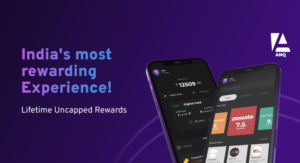March 3, 2025 – Uber, the global ride-hailing giant, has announced a significant shift in its operational model for auto-rickshaw services in India. Effective February 18, 2025, the company has transitioned from a commission-based structure to a Software-as-a-Service (SaaS) subscription model for auto drivers, fundamentally altering the dynamics of ride bookings and payments.
Key Changes and Implications for Users
- Direct Payments to Drivers
- Under the new model, riders are required to pay auto drivers directly, either in cash or via Unified Payments Interface (UPI).
- This marks a departure from the previous system where digital payments were processed through the Uber app.
- Uber credits and promotions are no longer applicable for auto rides, and riders are advised to disable Uber credits before booking to avoid payment issues.
- Fare Negotiation
- While Uber will continue to suggest fares for trips, the final amount is to be mutually agreed upon by the rider and the driver.
- This change empowers both parties to negotiate fares, providing flexibility but also necessitating clear communication to prevent disputes.
- Elimination of Commissions and Cancellation Charges
- In this revised framework, Uber will not charge drivers any commission for auto trips, allowing drivers to retain the full fare.
- Additionally, Uber will not impose cancellation charges on riders, aiming to enhance user experience and driver satisfaction.
- Role of Uber as a Technology Platform
- With this transition, Uber positions itself primarily as a technology platform that connects riders with drivers, rather than a direct service provider.
- Consequently, Uber will not mediate fare disputes, and riders are encouraged to resolve such matters directly with drivers.
- However, Uber maintains its commitment to safety and urges users to report any safety concerns through the app.
Drivers’ Perspective: Subscription-Based Access
For auto-rickshaw drivers, the shift to a subscription-based model means paying a fixed daily or weekly fee to access Uber’s platform, replacing the previous per-trip commission system.
This approach allows drivers to retain 100% of their earnings from each ride, potentially increasing their income, especially during high-demand periods.
This model aligns with strategies employed by local competitors, such as Rapido and Namma Yatri, which have adopted similar subscription-based frameworks.
Rationale Behind the Shift
Uber’s decision to overhaul its auto service model is influenced by several factors:
- Competitive Pressure
Local ride-hailing services have been gaining traction by offering driver-friendly policies, prompting Uber to adapt its strategy to maintain its market position.
- Regulatory Considerations
Navigating complex regulations across various Indian states, particularly concerning fare structures, has been challenging.
The new model simplifies compliance by delineating Uber’s role as a technology facilitator rather than a direct service provider.
Impact on Riders
For users, this transition necessitates adjustments in how they interact with Uber’s auto service:
- Payment Methods
Riders must be prepared to pay drivers directly, carrying sufficient cash or ensuring they can complete UPI transactions independently of the Uber app.
- Fare Discussions
The need for fare negotiation introduces a new element to the ride-hailing experience, requiring clear communication to agree upon fair pricing.
- Receipt and Reimbursement
As Uber will not provide tax invoices for auto trips under this model, riders seeking reimbursement must rely on fare suggestion receipts or arrange alternative documentation with drivers.
Conclusion
Uber’s adoption of a SaaS subscription model for its auto-rickshaw services in India represents a strategic pivot aimed at enhancing driver earnings and aligning with industry trends.
While this shift offers potential benefits, such as increased driver autonomy and simplified fare structures, it also requires riders to adapt to new payment methods and engage in fare negotiations.
As the ride-hailing landscape evolves, both users and drivers will need to navigate these changes to fully realize the advantages of this updated model.



